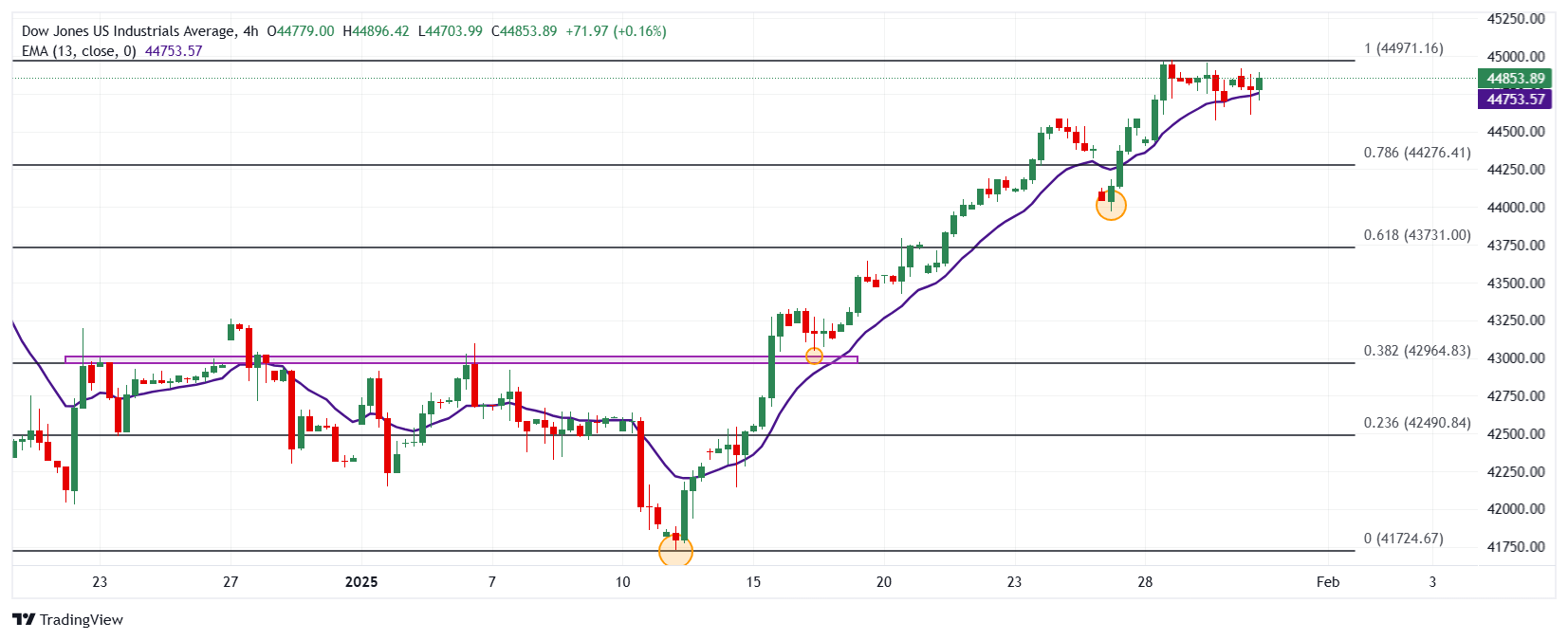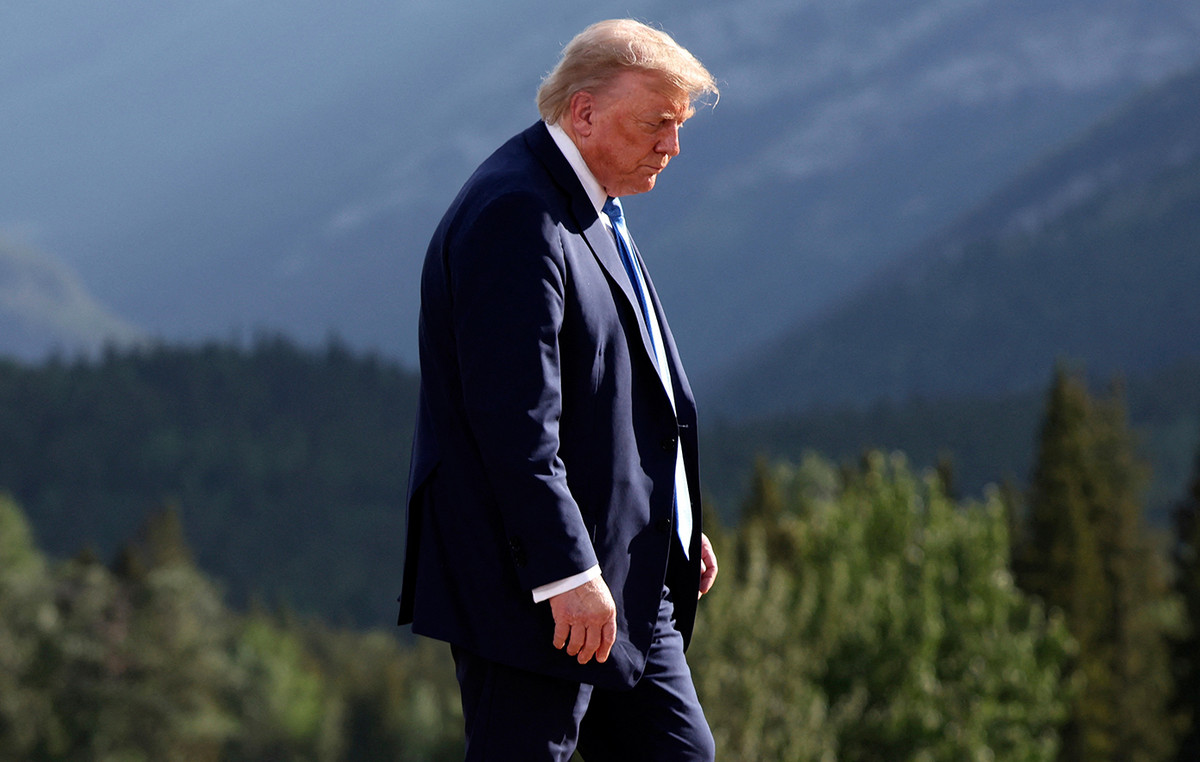- The Dow Jones wins 0.34% today.
- The Nasdaq 100 rises 0.40% in the day, driven by Lam Research (LRCX) and Roper Technologies (Rop).
- The S&P 500 rises 0.36% daily, animated by International Business Machines (IBM) and Las Vegas Sands Corp.
- The preliminary gross domestic product was 2.3%, below market estimates.
The Dow Jones established a daily minimum in 44,610, attracting buyers who took the index to a maximum of the day in 44,919.
The Dow Jones industrial average opened at 44,812, while the Nasdaq 100 technological index began operating at 21,449. The S&P 500 began negotiations in 6,051, quoting within the range of Wednesday’s session.
Cisco Systems and International Business Machines keep Dow Jones on positive terrain
The Dow Jones Hila index takes up the upward trend, rising 0.34% today, quoting at the time of writing at 44,859.
The actions of International Business Machines (IBM) rebound 12.78% daily, establishing a new historical maximum in 261.80. In the same tune, Cisco Systems titles earn 2.49% on Thursday, reaching maximum of January 27 in 61.07 $.
The Dow Jones recovers from the losses suffered yesterday and approaches the historical maximum reached on November 29, 2024 in 45,071.
The Nasdaq 100 is quoted in green supported by Lam Research and Roper Technologies
The Nasdaq 100 technological index rises 0.40% in the day, contributing currently in 21,494.
Lam Research titles (LRCX) earn 8.84% daily, reaching maximum of January 24 in $ 81,90. Following the upward perspective, the values of Roper Technologies shoot 6.98% daily, establishing a new historical maximum in 584.31 $.
NASDAQ 100 presents marginal gains in tune with the main stock market indices, in the middle of a week with key financial reports.
The S&P 500 operates with profits after the publication of the Gross Domestic Product of the United States
The S&P 500 index rises 0.36% today, operating when writing about 6,057.
The titles of Las Vegas Sands Corp. (LVS) lead the profits in S&P 500, rising 9.37% in the day, reaching maximums not seen since January 10 at $ 48.36.
On the other hand, US unemployment subsidy requests were located in 207,000 for the week ending on January 24. This result is less than the 220,000 expected and the 223,000 registered in the previous week.
Based on the information presented by the United States Economic Analysis Office, the preliminary gross domestic product contracted 2.3%, below the estimated 2.6% and 3.1% reached in the previous period.
Technical Analysis of Dow Jones
The Dow Jones reacted upwards in a short -term support given by the minimum of January 27 in 43,971. The following key support is observed in 41,731, pivot point of January 13. The closest resistance is 45,065, maximum of December 4, 2024.
4 -hour graph of Dow Jones

Dow Jones Faqs
The Dow Jones Industrial Avenge, one of the oldest stock market indexes in the world, consists of the 30 most negotiated values in the United States. The index is weighted by the price instead of capitalization. It is calculated by adding the prices of the values that compose it and dividing them by a factor, currently 0.152. The index was founded by Charles Dow, also founder of the Wall Street Journal. In recent years it has been criticized for not being sufficiently representative, since it only follows 30 companies, unlike broader rates such as S&P 500.
There are many factors that promote the Dow Jones Industrial Average (DJIA) index. The main one is the added performance of the companies that compose it, revealed in the quarterly reports of business benefits. The American and world macroeconomic data also contribute, since they influence investor confidence. The level of interest rates, set by the Federal Reserve (FED), also influences the DJia, since it affects the cost of credit, on which many companies depend largely. Therefore, inflation can be a determining factor, as well as other parameters that influence the decisions of the Federal Reserve.
Dow’s theory is a method to identify the main trend of the stock market developed by Charles Dow. A key step is to compare the direction of the Dow Jones Industrial Avenge (DJIA) and the Dow Jones Transportation Average (DJTA) and just follow the trends in which both move in the same direction. The volume is a confirmation criterion. The theory uses elements of maximum and minimum analysis. Dow’s theory raises three phases of the trend: accumulation, when intelligent money begins to buy or sell; Public participation, when the general public joins the trend; and distribution, when intelligent money abandons the trend.
There are several ways to operate with the DJ. One of them is to use ETF that allow investors to negotiate the DJ as a single value, instead of having to buy shares of the 30 companies that compose it. An outstanding example is the SPDR Dow Jones Industrial Avenge ETF (day). Future contracts on the DJ allow the specular operators about the future value of the index and the options provide the right, but not the obligation, to buy or sell the index at a predetermined price in the future. Investment funds allow investors to buy a part of a diversified portfolio of DJ values, which provides exposure to global index.
Source: Fx Street
I am Joshua Winder, a senior-level journalist and editor at World Stock Market. I specialize in covering news related to the stock market and economic trends. With more than 8 years of experience in this field, I have become an expert in financial reporting.







